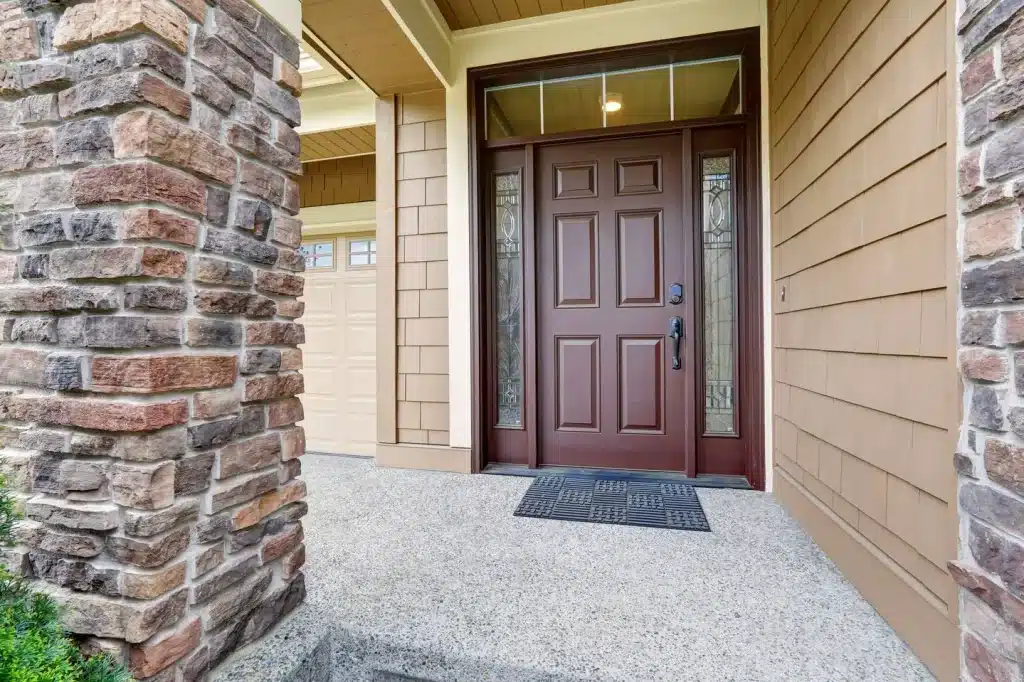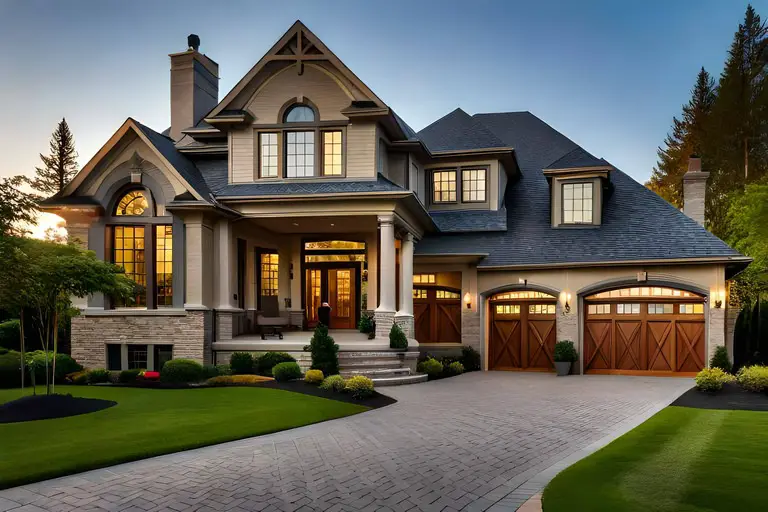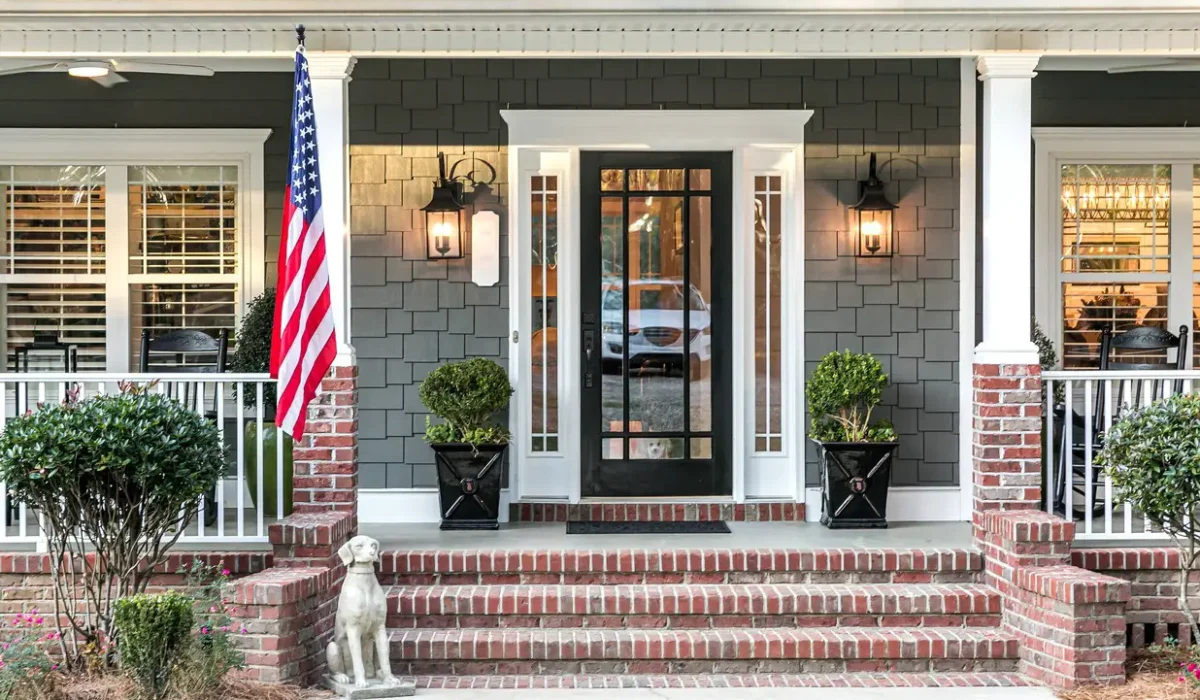The entrance to a home is more than just a doorway; it’s a transition between the world outside and the sanctuary within. It’s also a statement of style and an invitation to guests. One architectural element that plays a crucial role in defining this transitional space is the brickmold. But what exactly is this brickmold, and how does it influence the decision-making process when installing a door? In this article, we will learn about what brickmold is, as well as the materials it is made of, and the pros and cons of brickmold.
Let’s learn more and find out if it is right for your home!
What is Brickmold?
Brickmold is a type of trim or casing that frames the outside of a door or window. Traditionally used in brick homes, it provides a finished look by creating a transition between the wall and the frame.

Common Materials for Brickmold And Cost
There are several common materials for brickmold and the costs vary. Let’s take a look.
- Wood: Popular for its classic look but requires regular maintenance to prevent rot. Prices can range from $1 to $3 per linear foot for standard pine or fir. More durable or exotic woods can increase the price significantly.
- PVC or Vinyl: A low-maintenance and rot-resistant option that mimics the look of wood. Typically ranges from $2 to $4 per linear foot. It’s more resistant to moisture and rot, which can be a cost-saving factor over time.
- Composite: Made from a blend of materials, offering durability with minimal maintenance. Generally falls between $3 to $5 per linear foot. The blend of materials offers durability with less maintenance.
- Aluminum: Known for its strength and longevity, though it may lack traditional aesthetic appeal. Can cost anywhere from $2 to $6 per linear foot, depending on the thickness and finish.
Keep in mind that these prices are estimates and do not include additional costs such as installation, painting, or finishing. Prices also fluctuate based on market conditions and regional availability. For an accurate quote, it’s best to consult with local suppliers or contractors.
What Do You Need to Know When You Install a Door With Brickmold?
Installing a door with brickmold requires precise measurements and cutting to ensure a proper fit. Weatherproofing measures such as caulking and flashing are also necessary to protect against water damage.

What Are the Pros and Cons of a Door With Brickmold?
As with everything, there are pros and cons. Let’s take a look at the pros of a door with brickmold first. One of those is that it enhances architectural detail on the exterior of the home. It also provides a barrier against the elements, improving insulation. In addition, it can increase the curb appeal and potentially the value of the home.
The cons of a door with brickmold are it may require more maintenance, particularly if made from wood. Also, the installation can be more complex, which can increase costs.
Energy Efficiency
Brickmold can contribute to the energy efficiency of a door or window installation in several ways:
- Sealing Gaps: By covering the gap between the frame and the exterior wall, brickmold helps to seal off potential air leaks where outside air could enter and conditioned air could escape, thus maintaining the indoor temperature more effectively.
- Insulation: When properly installed with caulking and insulation materials, brickmold acts as an additional barrier to heat transfer, which can help keep your home warmer in the winter and cooler in the summer.
- Durability: Materials like PVC, composite, or aluminum are resistant to rot and decay, ensuring that the seal remains intact over time. This durability means that the energy-saving benefits of the brickmold last longer without needing frequent repairs or replacement.
- Weatherproofing: Brickmold often includes weather stripping or is paired with it during installation. This provides an extra layer of protection against wind and moisture, both of which can affect a home’s internal temperature and energy usage.
By improving the overall tightness of the building envelope, brickmold can play a role in reducing the amount of energy required for heating and cooling, leading to lower utility bills and a more comfortable living environment.
What Are Other Uses For Brickmold?
Beyond framing doors and windows, brickmold can be repurposed for shelving, picture frames, or even as decorative molding inside the home.
Maintenance onofoors and Exterior of the Home
Now that you know about brickmold, let’s take a look at a few other areas of recommended maintenance. One of those is measuring the patio door. Since you are thinking about the entry door, it might be a good idea to also look at the patio door. If it needs replacing or you want to freshen it up, there are different ways to measure it depending if you have French doors or sliders.
Another is cutting gutters. You may be looking into home improvements and one of those is adding gutters to the home. They help drain the water away from the home so it does not back up in the house. You may decide to cut your gutters. There are steps to follow and you can do this in your garage with your tools or hire a professional.
Lastly, you may find you have a sagging door. To fix this, you will need to follow the steps that include looking at the hinges, and door, and possibly replacing the door.
When Do I Call a Professional
Consider calling a professional if you’re not experienced in door installation, especially when working with brickmold. Proper installation is crucial to the functionality and look of the door. It is advisable to call a professional when undertaking such a project to ensure proper installation and optimal results. A professional can help make sure it is done correctly and you protect the safety of your home. If you aren’t sure who to call, contact Edifice Inspections for a home inspection and they can give you a referral.
Check out this video below about installing PVC Brickmold.
Conclusion
Deciding on whether to use brickmold for your door installation involves balancing aesthetic preferences with practical considerations. Brickmold can enhance curb appeal and improve energy efficiency but also requires varying degrees of maintenance depending on the material chosen. Ultimately, the choice should align with your home’s style, your taste, and the specific needs of your environment. For those unsure about the best option, seeking professional advice can ensure a decision that satisfies both appearance and functionality for the long term. While you are taking care of your entryway door or deciding on the next type of entryway door and feature you would like, reach out to Edifice Inspections in Peachtree Corners, GA for a home inspection.

